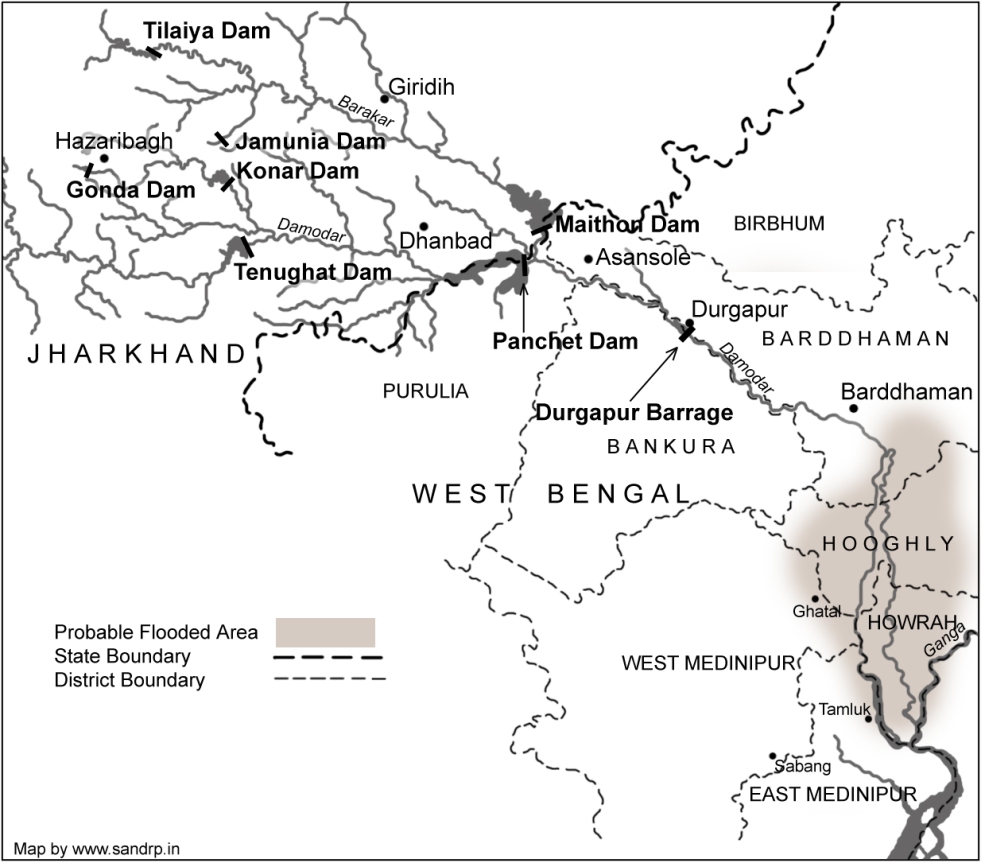India is a land shaped by its rivers. Did you know that the country is home to thousands of rivers? These rivers flow into 20 major river basins across the subcontinent. The Ganga (Ganges) is the largest river in India by basin area. It's also the longest river, stretching over 2500 km.
In contrast, the Brahmaputra River is considered the widest river in India, especially during the monsoon season. Rivers often get different names based on their characteristics or the region they flow through. For example, the Yamuna is sometimes called Jumna, and the Godavari is known as Dakshin Ganga (Ganga of the South).

One river, in particular, is infamous for its destructive floods, especially during the rains, causing great distress and economic loss in a specific state. It has shifted its course many times over the centuries. Do you know which river is known as the "Sorrow of West Bengal"? In this article, we'll take a look at the history, impact, and modern control measures related to this powerful river.
Which River is known as the "Sorrow of West Bengal"?

The river known as the "Sorrow of West Bengal" is the Damodar River. It originates from the Chota Nagpur Plateau in the state of Jharkhand. The Damodar flows for approximately 592 km across Jharkhand and West Bengal before it drains its water into the Hooghly River, which is a distributary of the Ganga River.
The name "Sorrow of West Bengal" comes from the destructive, annual floods that have historically caused death and devastating damage to crops and property in the plains of West Bengal. Its major tributaries include the Barakar, Konar, Bokaro, and Jamunia rivers.
The construction of the Damodar Valley Corporation (DVC) dams, beginning in 1948, has largely tamed its fury. The river is now considered a source of development, providing water for irrigation, power generation, and flood control.
10 Lesser-Known Facts About the Damodar River
- Its name, Damodar, is believed to mean 'rope around the belly' (referring to Lord Krishna).
- The valley is often called the "Ruhr of India" because it is rich in mineral resources like coal.
- The river flows through a rift valley created by faulting.
- It is one of the most polluted rivers in India due to industrial and mining waste.
- The Durgapur Barrage, built on the river, provides water for irrigation.
- Before the DVC, the river had a long history of shifting its course.
- The Barakar River is its largest and most important tributary.
- The DVC project was the first multipurpose river valley project of independent India.
- The DVC's first dam was built on its tributary, the Barakar, at Tilaiya in 1953.
- The river basin holds around 36.5% of India's total coal reserve.
Which River Is Known As The Sorrow Of Bihar?
The river known as the Sorrow of Bihar is the Kosi River. It earned this ominous nickname because it tended to experience catastrophic annual floods. The Kosi is a transboundary river that flows through China, Nepal, and India. It joins the Ganges River in Bihar. The Kosi is particularly famous for its volatile nature and frequent shifting of its course over centuries. This shifting and the massive amount of silt it deposits make it impossible to build permanent embankments. It annually devastates vast, fertile agricultural lands, severely impacting the economy and human lives in North Bihar.
Which River Is Called The Sorrow Of Assam?
The river commonly called the Sorrow of Assam is the Brahmaputra River. The Brahmaputra is one of the largest rivers in the world. During the monsoon season, the immense volume of water it carries causes widespread, annual devastation across the Assam Valley. The river is known for its braided channel and high levels of silt deposition, which raise the riverbed. This combination leads to severe bank erosion and disastrous floods that destroy crops, homes, and infrastructure every year, making it the primary source of grief for the state.
Which River Is Known As The River Of Mist?
The river known as the River of Mist is the Yarra River in Victoria, Australia. This name comes from the Indigenous people, the Wurundjeri Woi-wurrung, who traditionally called the river "Birrarung". The Wurundjeri name literally translates to "a place of mists and shadows". Before European settlement, the river was often covered in a heavy mist, especially during the early morning hours and before nightfall, giving it a mysterious and shadowy appearance that inspired its beautiful traditional name. Today, the river flows through the city of Melbourne.
Comments
All Comments (0)
Join the conversation